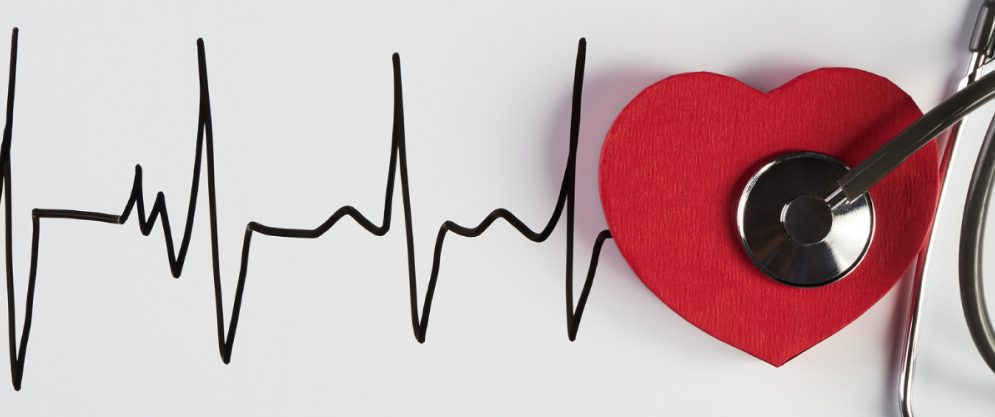
Atrial Fibrillation
Atrial Fibrillation (AF) is the name for the most common type of irregular heartbeat (arrhythmia). When someone has AF, it means that their heart beats in a disorganised way. This chaotic activity leads to an irregular and, usually fast pulse rate, which may cause palpitations, and increases the risk of having stroke, heart failure or other heart-related complications.
To understand AF you need to know a little about how your heart works. Your heart is a muscle about the size of a clenched fist and is located slightly to the left of the centre of your chest. The heart has four chambers – two upper ones, called the right and left atria, and two lower ones called the right and left ventricles. The heart’s function is to pump blood all around the body. It does this via its own electrical system driven by its natural internal pacemaker and this causes the heart to beat regularly.
Heart rate and heart rhythm are the different ways the heart pumps.
The heart rate is the number of times your heart beats in a minute. For most people, normal heart rate is between 60 and 100 beats per minute (although it can vary from person to person and can depend on what you are doing). The heart rhythm is how regular or irregular the beats are. Normal heart rhythm is known as sinus rhythm. Both the heart rate and the heart rhythm need to be regular for your heart to work as best it can.
With atrial fibrillation, a problem with the heart’s electrical system causes the two upper chambers of the heart (the atria) to quiver or beat in a disorganised pattern. This upsets the rhythm between the upper and lower chambers and results in the ventricles beating faster without a regular rhythm.
The symptoms of AF can come and go, can change over time and there may be long spells between episodes. Indeed, some people in the early stage of AF may not even be aware that they have the condition. It is important to know which type of AF you have in order to understand your condition and determine how it can be treated. There are three types of AF and each one determines the type of treatment you might require. The types of AF can be classified as follows:
- Paroxysmal AF: Paroxysmal AF are episodes of AF that come and go and can last for hours or days. However, they generally do not last any longer than a week. If you have symptoms, these may also come and go.
- Persistent AF: This type of AF generally lasts longer than seven days. It does not go away on its own and generally requires some kind of medical treatment to restore the normal rhythm of the heart.
- Permanent AF: This is a continuous type of AF, lasting longer than a year, where your regular heartbeat does not return and a normal heart rhythm cannot be restored with medical treatment. With this type of AF you may need medications to control the heart rate.
The symptoms of AF are different for different people. Some people do not have any symptoms and are only diagnosed during a routine medical check-up. Other people might notice their heart beating faster or with an irregular rhythm and decide to visit their doctor. Symptoms can include the following:
- Palpitations, or awareness of your heartbeat, where it feels like your heart is racing, thumping or fluttering
- Feeling tired, weak or lacking energy
- Being dizzy, light-headed or feeling faint
- Being short of breath
- Experiencing pain or discomfort in your chest
If you feel you have any symptoms of AF, it is important to see your doctor as soon as possible.
The causes of AF are not always clear or easy to determine and sometimes there is no known cause. AF can affect people of any age, but it is more common in people over 65. The risk factors that increase the likelihood of developing AF are:
- High blood pressure
- Coronary heart disease
- Heart attacks
- Disease of the heart valves
- Heart failure
- Overactive thyroid gland
- Lung infections such as pneumonia
- Blood clots in the lungs (pulmonary embolism)
- Previous heart or lung surgery
- Diabetes
- Sleep apnoea (interrupted breathing while sleeping)
- Drug or alcohol abuse.
If you are having signs or symptoms of AF, you will need to visit your doctor. Regular pulse checks can help to detect AF. After a physical examination, there are a number of tests your doctor may recommend in order to diagnose whether or not you have AF. These tests may include:
- Electrocardiogram (ECG): The ECG test measures and records your heart rhythm and rate. It usually just takes a few minutes and can be done at your doctor’s surgery or in hospital. This is the main test used to diagnose AF.
- 24 Hour ECG Recording (Holter Monitor): In some cases, it may be necessary to monitor the heart over a 24-hour period. You wear a small recording device for 24 hours, usually around your waist, and it records the electrical activity of your heart.
- Echocardiogram (Echo): This test is an ultrasound of the heart and is used to detect if there are any problems with the heart muscle or valves that are contributing to the irregular heart rhythm.
- Cardiac Event Recorders: If you do not get symptoms, very often your doctor may use other devices to diagnose your irregular heart rhythm, including a cardiac event recorder or an implantable loop recorder. These record the electrical activity of your heart over a longer period of time.
- Coronary Angiogram: This is an additional test that may be carried out to determine if there is any narrowing of the coronary arteries that supply blood to the heart muscle.
AF is treated differently for different people. Your doctor will recommend the treatment that is best for you and will be dependent on a number of factors including:
- The type of AF you have been diagnosed with
- How long you have had AF
- What kind of symptoms you have
- What treatments you have already received
- Your medical history – any underlying cause.
The goals of AF treatment are to:
- Help control your heart rate
- Return your heart rhythm to a normal rhythm (if possible)
- Reduce the risk of blood clots forming in order to reduce your risk of stroke.
Living with AF
AF is not immediately life-threatening in the same way as some arrhythmias (irregular heartbeats) are. Most people are able to live full and active lives with AF. You can do this by taking your prescribed medication, following the medical advice you received from your doctor, having regular medical check-ups and making positive lifestyle changes.
If you have any questions or concerns, contact the Croí Health Team on 091-544310 or email healthteam@croi.ie.
Previous Webinar: Fingers on the Pulse for Afib Awareness
To mark World Heart Rhythm Week 2023, Croí hosted a webinar ‘Fingers on the Pulse for Afib Awareness’ 💻
This FREE webinar took place online via Zoom on, Thursday, June 15th from 7pm–8pm.
This webinar was supported by Johnson & Johnson’s – Get Smart about Afib
